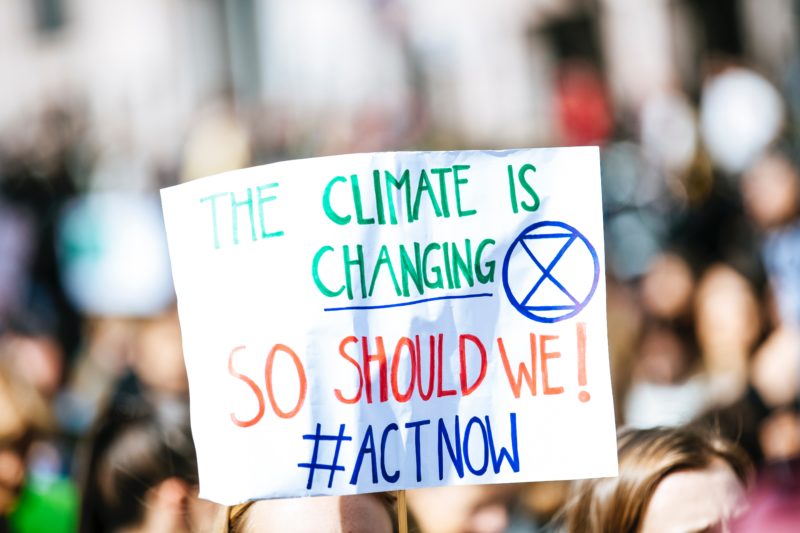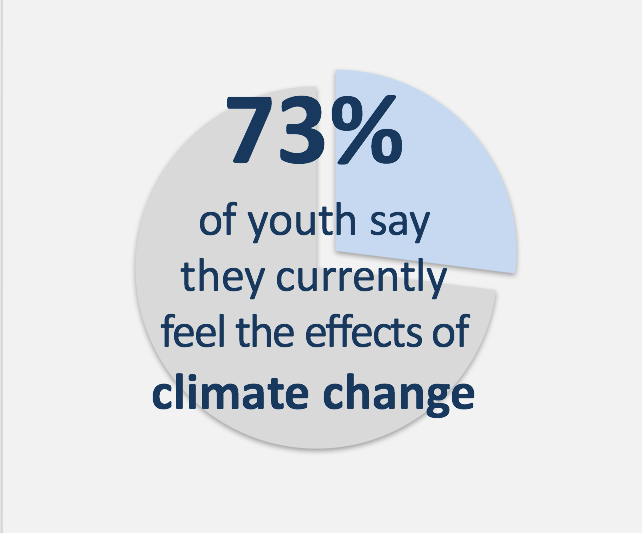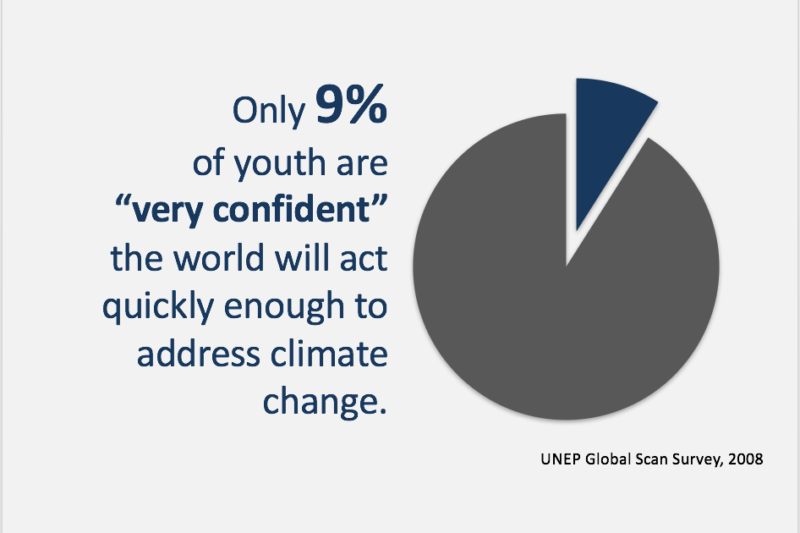Teaching Climate Change to Youngsters Can Be ‘Big Little’ Lesson
By Rohan Mirchandani & Mary McFadden (Graphics)
Reporting Texas
 First-grade teacher Hannah Rubinstein points to a sky blue bulletin board at the back of her classroom clad in handmade decorations. There’s a happy-faced sun made from a paper plate painted yellow and orange and a cluster of storm clouds which Rubinstein crafted from cotton balls.
First-grade teacher Hannah Rubinstein points to a sky blue bulletin board at the back of her classroom clad in handmade decorations. There’s a happy-faced sun made from a paper plate painted yellow and orange and a cluster of storm clouds which Rubinstein crafted from cotton balls.
At the top of the board, Rubinstein has written “What’s the Weather Like Today?” in curly black lettering.
“Does anyone remember what it felt like outside when you came to school today?” Rubinstein asks her students, who sit in a tightly-formed circle, legs crossed, on a plush mat on the floor. There’s a half-moment of silence before one of the students sitting closest to Rubinstein yells out.
“Sunny,” he says, beaming, proud of his memory.
“Right!” Rubinstein says. “And what’s the word we use to talk about what’s happening outside? I’ll give you a hint – it’s on the board behind me.”
A girl in pink peeks her head out to look behind Rubinstein: “Weather!”
“Right! Weather,” Rubinstein says. “And today, we’re going to talk about another part of weather. Some of you have probably heard of it.”
“It’s called climate.”
***
Rubinstein is beginning a unit on climate change. Climate change isn’t a part of elementary school curriculum, and because of that most students won’t discuss it in a school setting until middle school – and that’s at the earliest. Rubinstein’s decision to speak about it with her students was long and complicated. She was met with opposition from many. After all, her oldest students are only seven.
“I had a young boy come to me a couple weeks ago and ask if he was ever going to have the chance to be a teenager or whether he’d die from global warming before that ever happened,” Rubinstein said. “There was a lot of anguish in his face. It was very upsetting to see.”

Rubenstein said she’s heard similar concerns from other students as well as other teachers.
“Kids are struggling hard with this,” said Natalie Walrath, volunteer who instructs elementary school science programs in Austin. “Because climate change is such a prominent part of public discourse, young people are absorbing more information than we likely give them credit for. What are we supposed to do? Ignore it?”
Rubenstein added, “If climate change is something my kids are going to be worrying about, it only makes sense for me, and the rest of the [education] system, to give them actual information about it.”
The decision to talk to students about climate change has proved to be controversial due to its frightening nature – not to mention the issue’s political polarity.
Take HBO’s hit drama series “Big Little Lies.” In the show’s second season, second-grader Amabella faints from a panic attack after learning about environmental decline in a classroom activity where students repeated climate-change-related statistics.
“How many gallons of water does it take to make a single sausage?” the fictional teacher asks his students from the bubble of Monterrey, California, who respond back in chorus. “A thousand.”
Amabella’s mother, Renatta, portrayed by actor Laura Dern, bursts into the school in steel-toed boots demanding to know, “What possesses idiots … to teach second graders that the planet is doomed?” A school-wide assembly occurs in response, soliciting a variety of other equally extreme opinions.
The scene in Big Little Lies is not unlike the drama offered by international concerns. Climate change statistics can be grim and prognosticators’ predictions certainly overwhelming.
As the United Nations reports, by 2050 we’ll likely need the equivalent of three Earth-like planets worth of resources to sustain our current way of living. And then there’s the rising temperature averages leading to rising sea levels recently experienced in Venice, Italy.
“This is the first time in history where we have a kind of awareness on this issue, where we can do something,” Walrath said. But the newness means that teachers, administrators and schools are figuring out the rules as they go. According to Walrath there’s no curriculum and very little psychological research on how young people will cope (or if they should even have to).
“To be clear, we aren’t going in to our classrooms guns blazing armed with apocalyptic rhetoric,” Rubinstein said. “No responsible educators are trying to scare anyone’s kids.”
Rather, her approach is tailored to the needs and awareness level of her students.
“This is an issue that’s complex and very scientifically dense and so one of our primary jobs is just to make it accessible,” Walrath said.
“We won’t be mentioning carbon emissions just yet,” Rubinstein said. “It’s not because we’re sheltering them. It’s about breaking it down.”
By first grade, students have already learned some things about the concept of weather.
“In kindergarten, they usually talk about temperature, rain, snow,” Rubenstein said. “Now, we’ll extend that into what temperature looks like long-term.”
***
When Rubinstein finishes up the first part of her lesson, she sits down in the circle among her students and asks them how they’re feeling. They sit quietly before Rubinstein breaks the silence.
“It’s okay if we have a lot of emotions right now,” she says. “I have many myself.” Her demeanor is composed but nurturing as she says this.
“It’s scary!” one of Rubinstein’s students yells out. Several students in the class chime in in agreement.
Rubinstein nods. “It sure is. It sure is.”
The class will learn about how they can become more environmentally conscious over the course of the school year with lessons planned on water conservation, gardening and recycling.
As for the kids, Rubinstein thinks they’re handling the information just fine.
“Even though it’s hard to swallow, we’re giving them facts and we’re speaking to them in action-oriented language,” Rubinstein said, looking out on her classroom.
Her tone is serious, but she’s optimistic.
“These kids. This is the generation that can actually fix this.”
